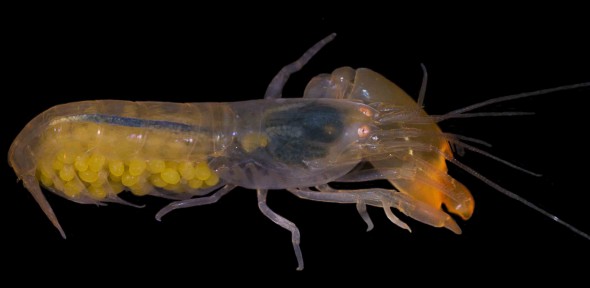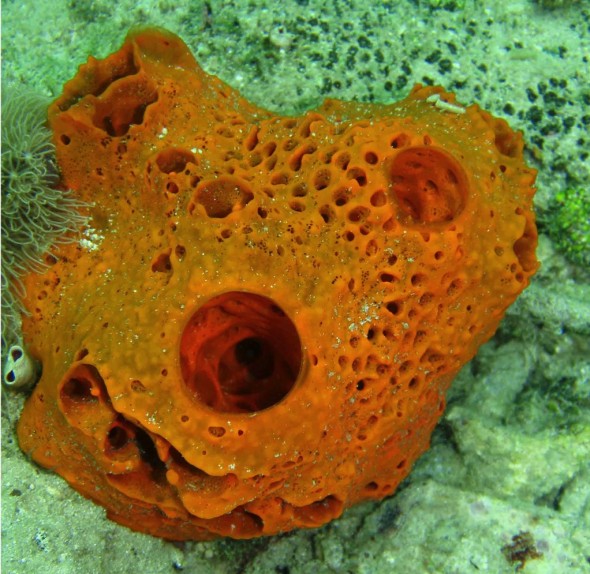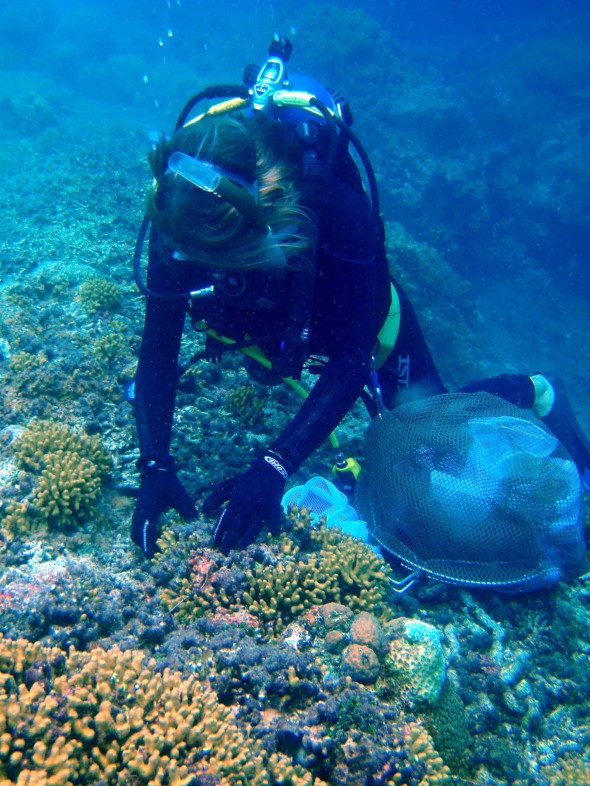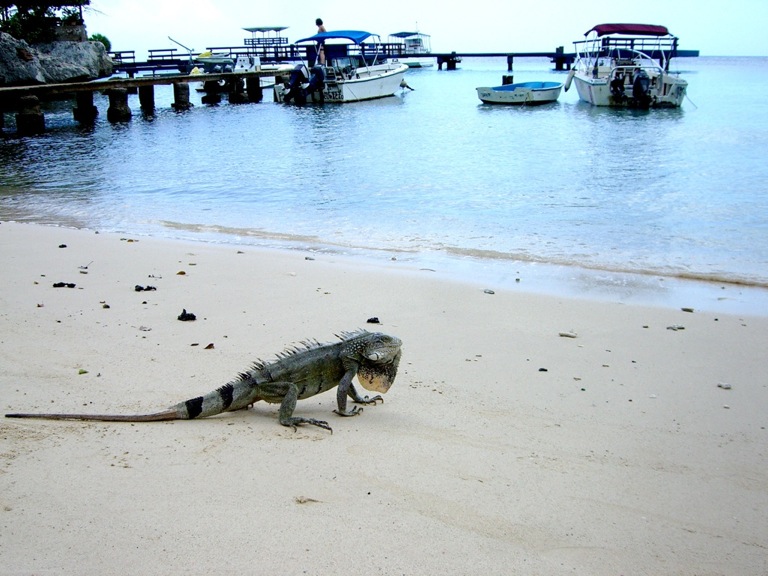 Of all the wondrous creatures of the sea, only a small handful of inconspicuous shrimps have risen to the pinnacle of social life shared by the ants and honeybees with their large, organized, and cooperative colonies, the condition known as “eusociality”. Because of their retiring habits—making their homes in tunnels within living sponges—and the devilish difficulty of identifying them, these sponge-dwelling shrimps were poorly known until recently. The first social shrimp was only described in 1996.
Of all the wondrous creatures of the sea, only a small handful of inconspicuous shrimps have risen to the pinnacle of social life shared by the ants and honeybees with their large, organized, and cooperative colonies, the condition known as “eusociality”. Because of their retiring habits—making their homes in tunnels within living sponges—and the devilish difficulty of identifying them, these sponge-dwelling shrimps were poorly known until recently. The first social shrimp was only described in 1996.
 But after a series of Caribbean expeditions and painstaking lab work, my colleagues Kristin Hultgren and Tripp Macdonald and I believe we’ve finally figured out who is who, how they are related, and—most importantly—some of the clues to why these otherwise rather prickly animals have put aside their differences and banded together into colonies working for the common good.
But after a series of Caribbean expeditions and painstaking lab work, my colleagues Kristin Hultgren and Tripp Macdonald and I believe we’ve finally figured out who is who, how they are related, and—most importantly—some of the clues to why these otherwise rather prickly animals have put aside their differences and banded together into colonies working for the common good.
To do so, we first had to overcome the taxonomic challenges. Most of the species look very similar to the uninitiated (and even to us), the features used to identify them are often variable, and the different species sometimes live together in the same sponges—a taxonomists’s nightmare! But identifying them reliably was absolutely key to sleuthing out the evolution of their unique social lives. So with support from the National Geographic Society, the three of us spent several weeks during 2008 exploring the reefs of Jamaica, Curacao, and Barbados, building on our previous long-term work in Belize and Panama. What a great adventure it was!
 The latest fruit of those expeditions has just appeared, based on our work from Barbados, which produced a new, miniature species of eusocial shrimp, a creature smaller than a rice grain named Synalpheus microneptunus that lives in small colonies of usually no more than ten individuals. This brings the total number of social species to eight. All in all, we’ve now nearly doubled the known West Atlantic species of symbiotic Synalpheus to about 40.
The latest fruit of those expeditions has just appeared, based on our work from Barbados, which produced a new, miniature species of eusocial shrimp, a creature smaller than a rice grain named Synalpheus microneptunus that lives in small colonies of usually no more than ten individuals. This brings the total number of social species to eight. All in all, we’ve now nearly doubled the known West Atlantic species of symbiotic Synalpheus to about 40.
In another major milestone, Kristin has just completed a new phylogenetic analysis that for the first time provides a robust, well-supported family tree for the whole group, including the many newcomers.
Who cares, you might well ask, about how many species there are of tiny shrimp or who they’re related too, and why otherwise seemingly well-adjusted people would spend so much time fiddling around with them. A good question. The simple answer is that these shrimp provide a unique window into one of the oldest and most puzzling questions in evolutionary biology, namely, why cooperation and altruism should evolve repeatedly in animals when we understand natural selection to promote mostly selfish behavior.
Working out the taxonomy and phylogenetic tree allows us to trace the evolutionary history of this fascinating group. We are now building on our previous findings, which have shown that eusociality has arisen at least three times independently in these shrimp, that as in most other highly social animals a key to cooperation is close family ties (maintained by “direct development” to crawling larvae that keep families together–see the figure), and that cooperation has given these shrimp the competitive edge that allows them to dominate the sponges on coral reefs and use a broader range of resources than their solitary relatives.
 I’m now looking forward to extending our explorations to the mother of all the Caribbean islands–Cuba–where John, Abel, and I will be heading later this month. As the largest island in the region, it is likely to host especially high diversity and probably new endemic species, as we saw on our expedition to the second largest Caribbean island, Jamaica.
I’m now looking forward to extending our explorations to the mother of all the Caribbean islands–Cuba–where John, Abel, and I will be heading later this month. As the largest island in the region, it is likely to host especially high diversity and probably new endemic species, as we saw on our expedition to the second largest Caribbean island, Jamaica.
A PowerPoint presentation for teaching, with images and background information on social shrimp, can be downloaded here. And the BBC’s video of a shrimp colony in action can be seen here.
Original sources:
Duffy, J.E. and K.S. Macdonald III. 2010. Kin structure, ecology, and the evolution of social organization in shrimp: A comparative analysis. Proceedings of the Royal Society of London B Biological Sciences 277:575–584.
Hultgren, K.M., K.S. Macdonald III, and J.E. Duffy. 2011. Sponge-dwelling snapping shrimp (Alpheidae: Synalpheus) of Barbados, West Indies, with a description of a new eusocial species. Zootaxa 2834:1-16.
Hultgren, K.M. and J.E. Duffy. 2011. Multi-locus phylogeny of sponge-dwelling snapping shrimp (Caridea: Alpheidae: Synalpheus) supports morphology-based species concepts. Journal of Crustacean Biology 31:352-360.

Leave a Reply